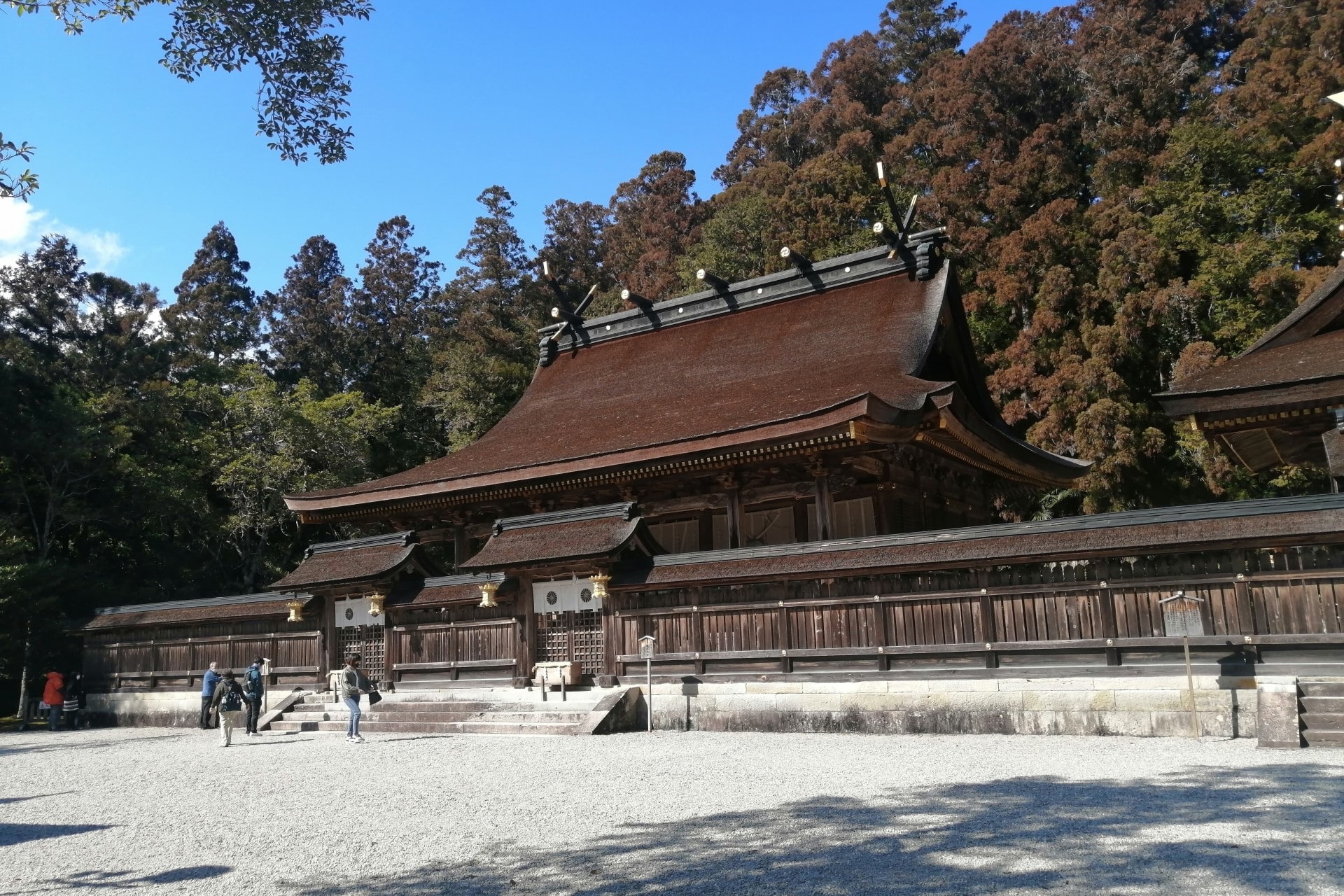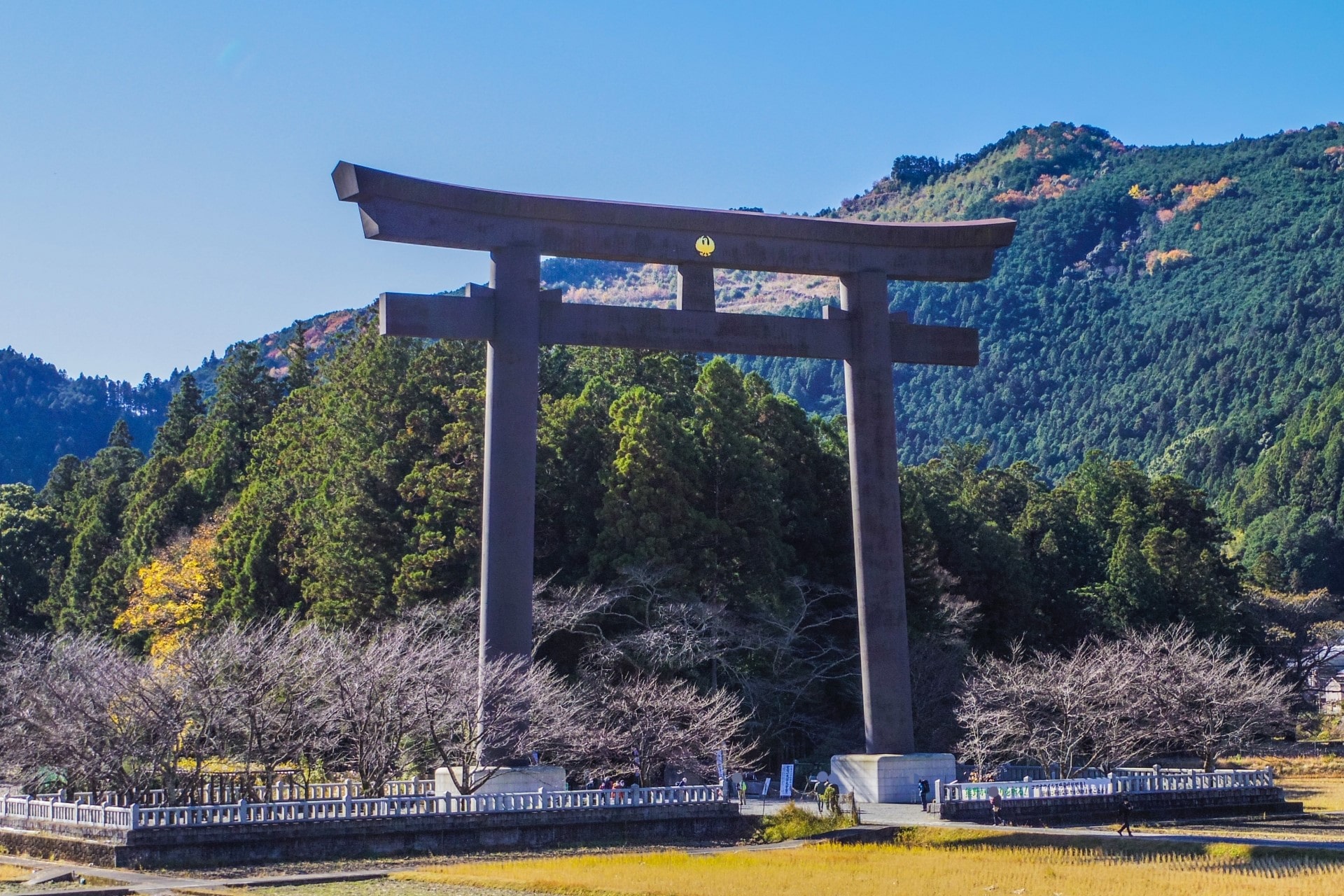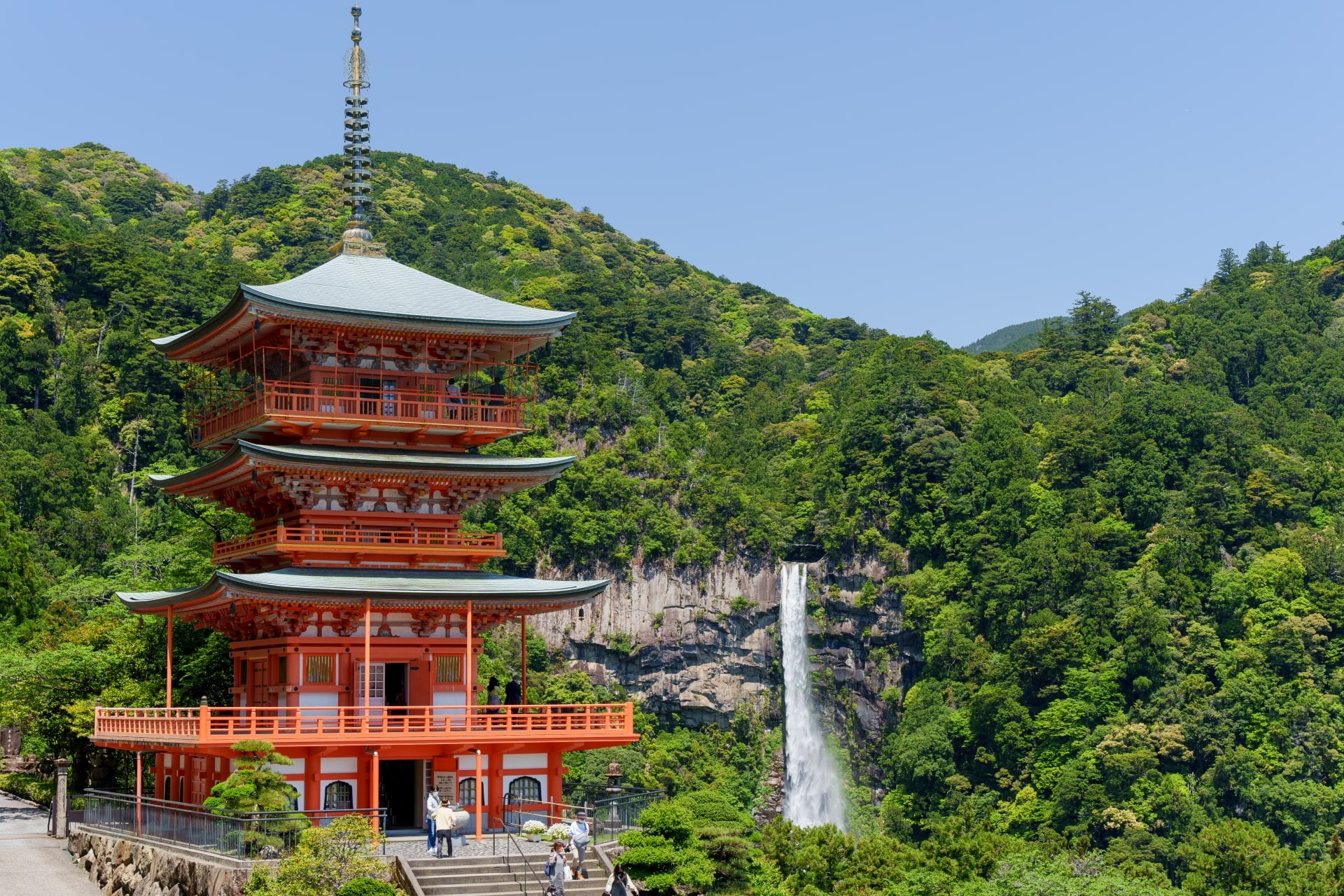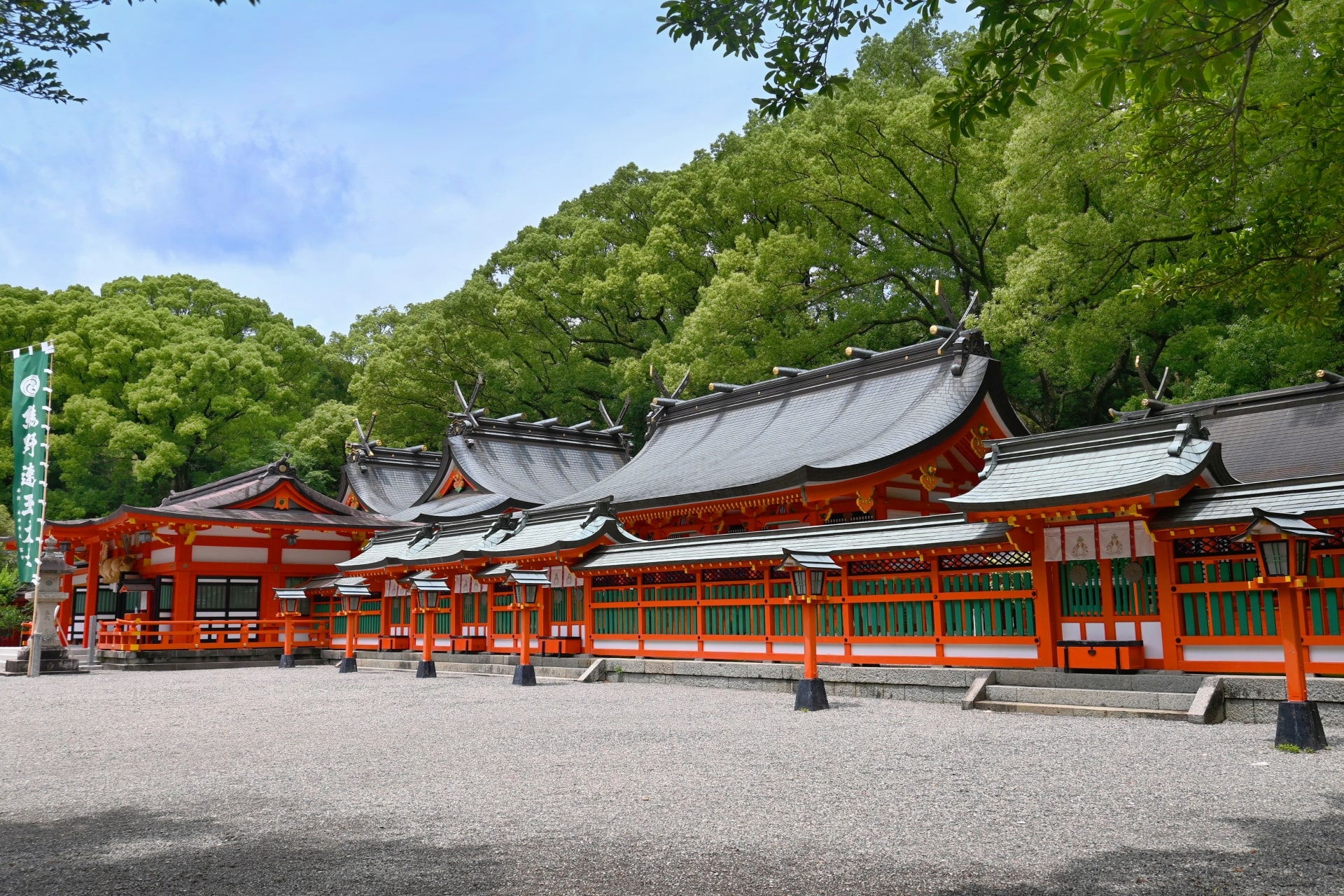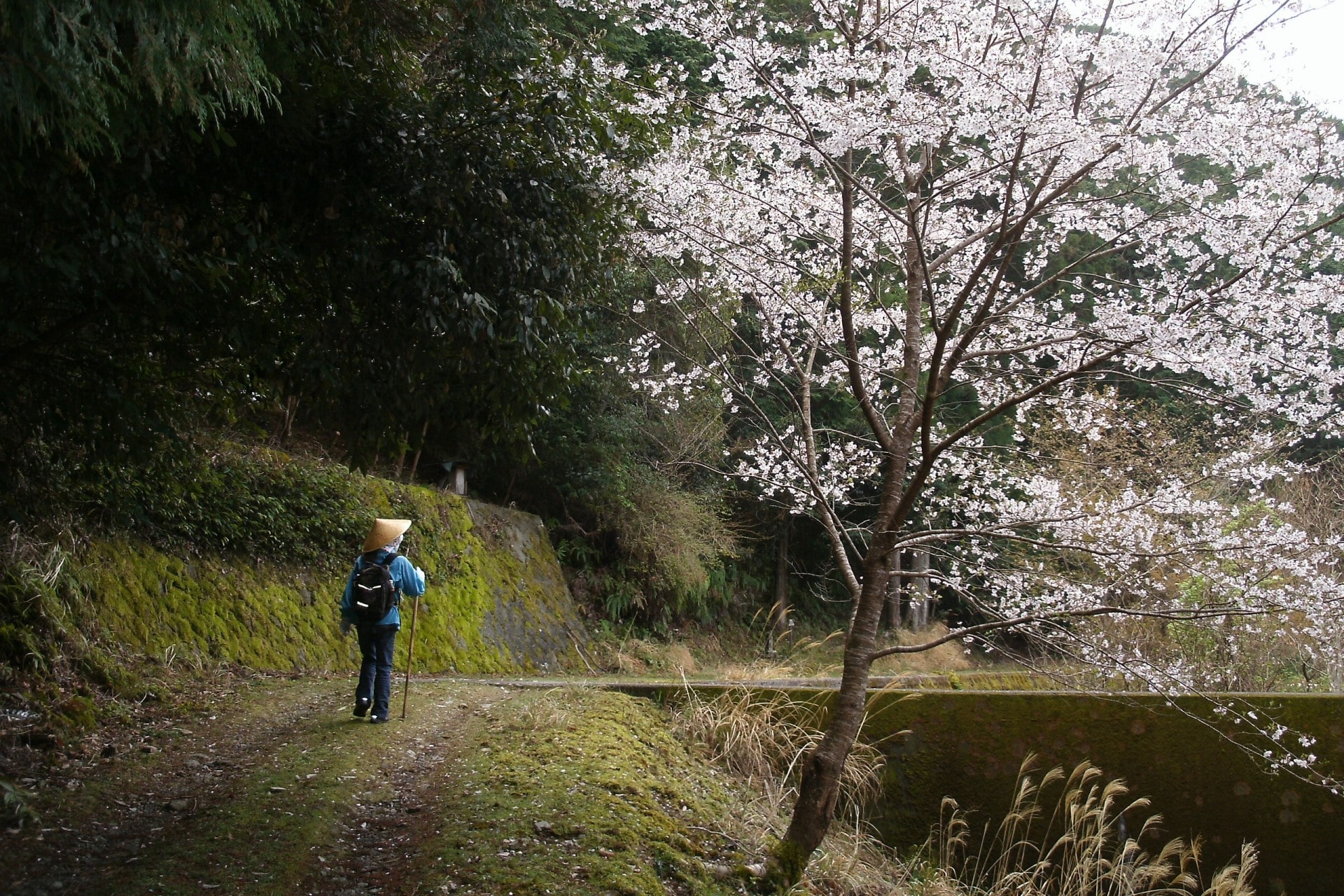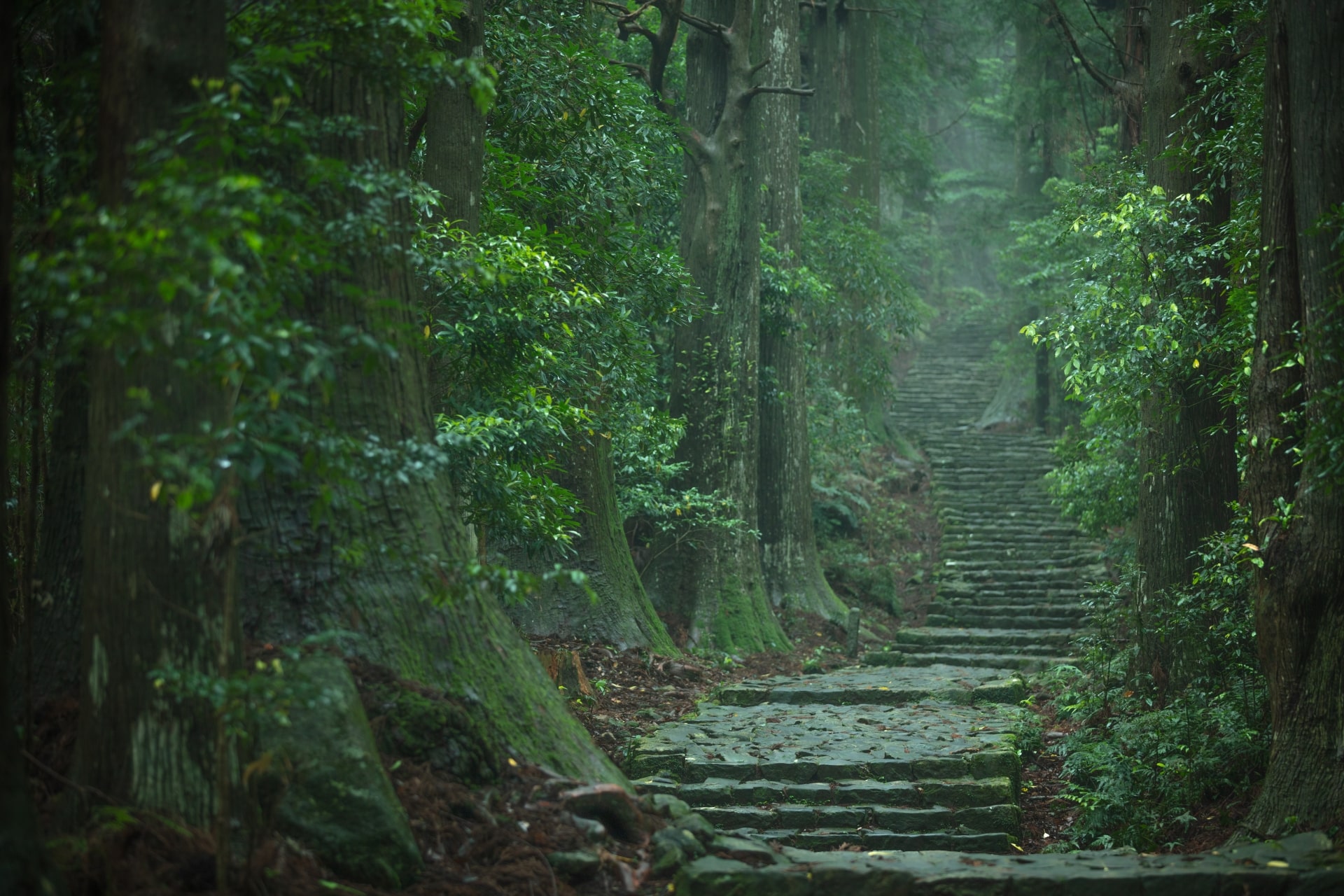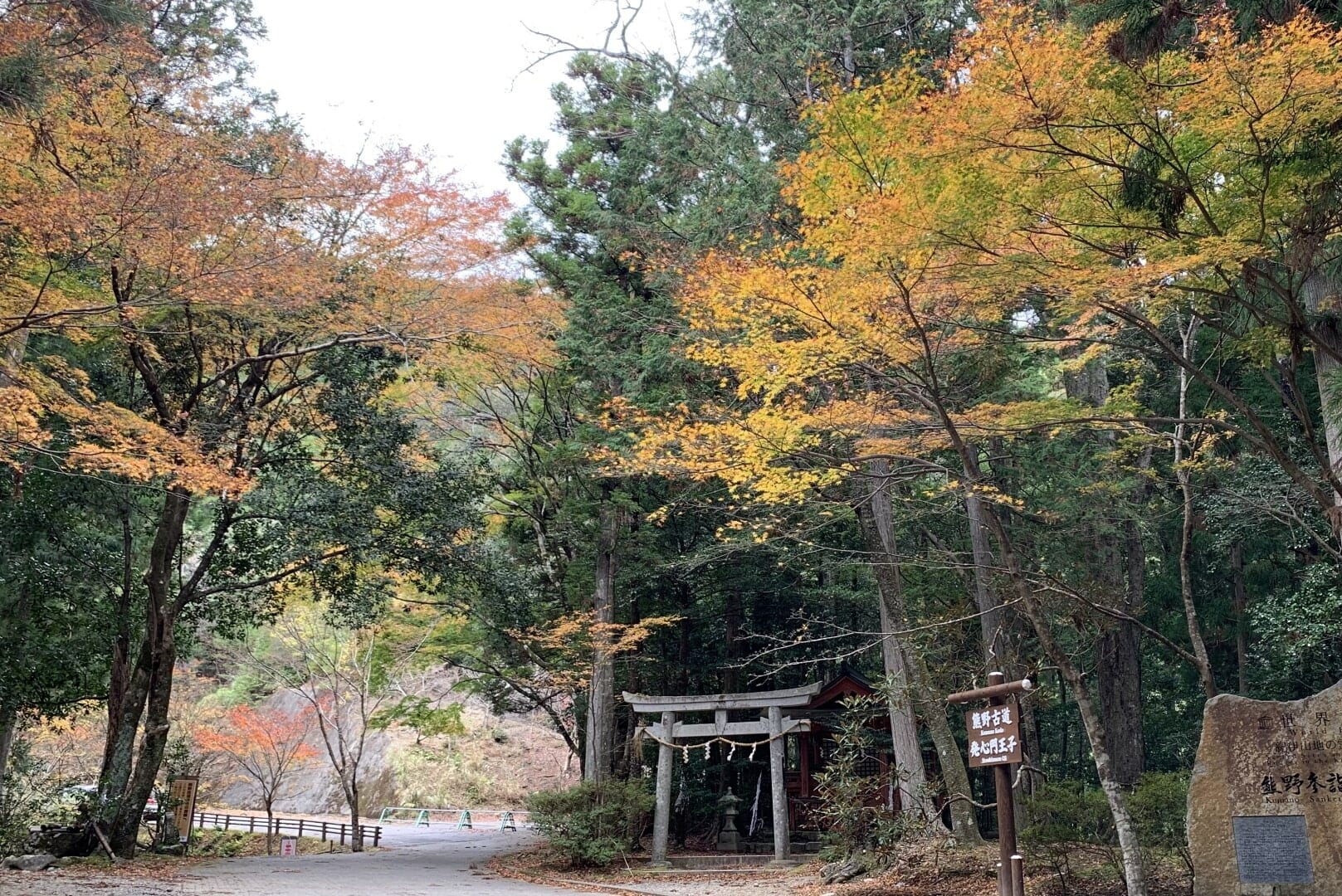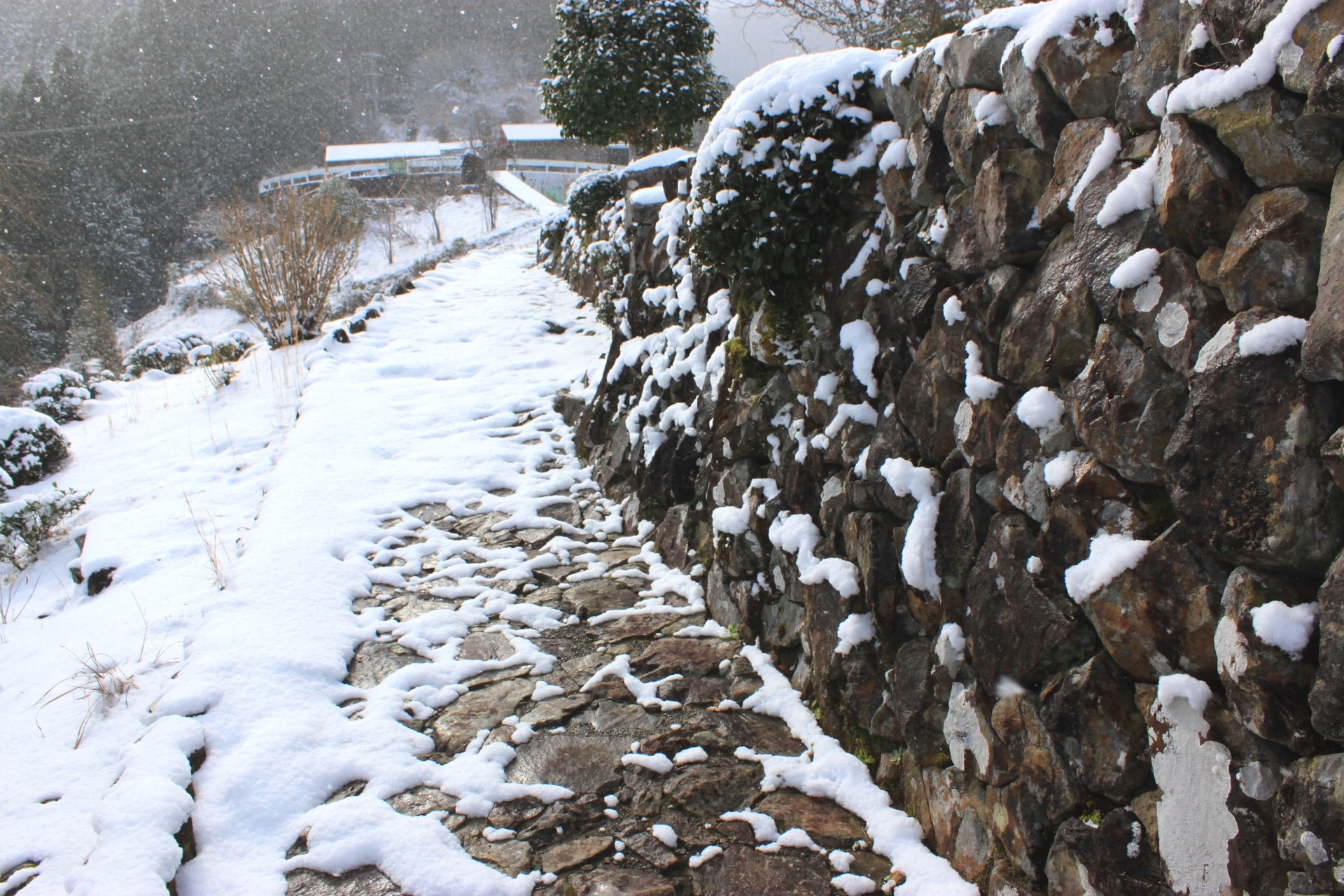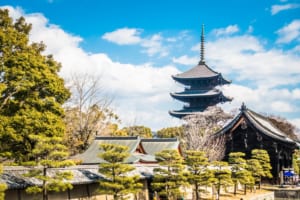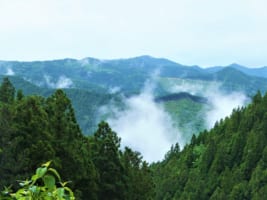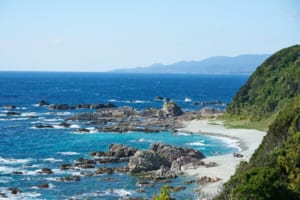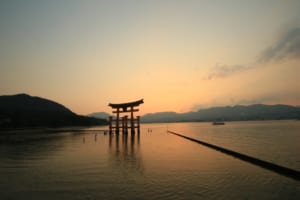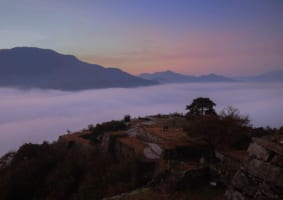Kumano Kodo Pilgrimage Routes Guide
Kumano Kodo Guide to Sacred Routes and Shrines
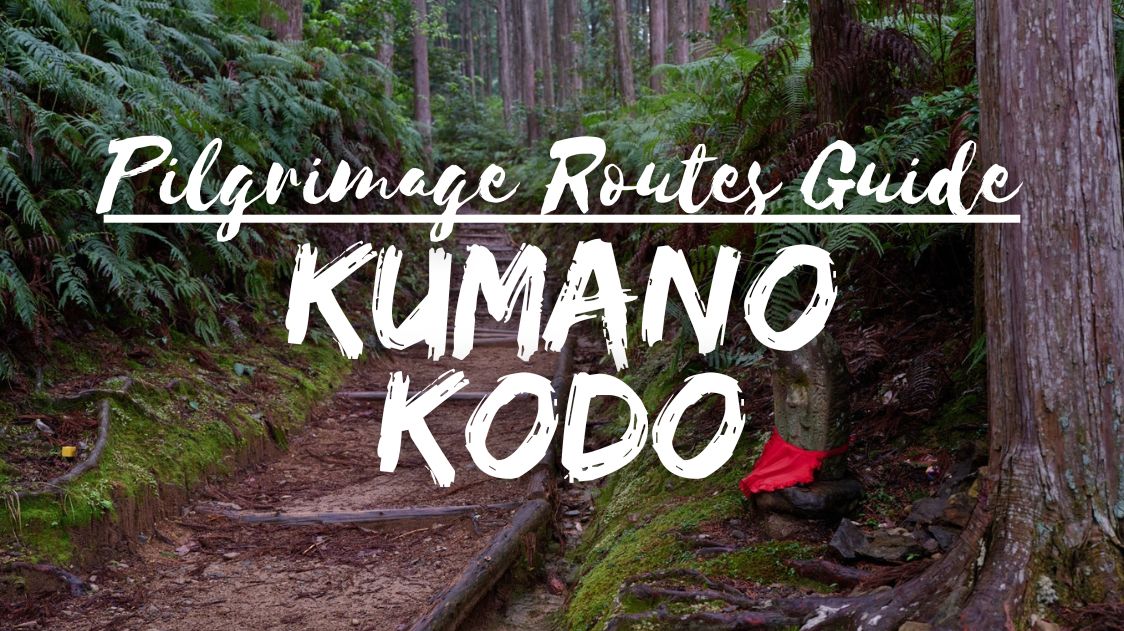
In Japan’s Kii Peninsula, the Kumano Kodo draws through the landscape, a network of ancient paths with more than a thousand years of history. This pilgrimage route, the only one in the world recognized as a UNESCO World Heritage Site along Spain’s Camino de Santiago, connects the natural beauty of the region with its deep spiritual heritage.
Here, emperors, warriors, and seekers have all embarked on journeys that intertwine physical endurance with spiritual questing. At the heart of these paths lie the Kumano Sanzan, the collective name for the three grand shrines that embody the fusion of Shinto and Buddhist beliefs: Kumano Hongu Taisha, Kumano Hayatama Taisha and Kumano Nachi Taisha.
Traversing the Kumano Kodo is an exciting experience that allows travelers to explore the scenic vistas as well as the traditions and rituals that have been part of the Japanese way of life for centuries.
Understanding the Kumano Kodo
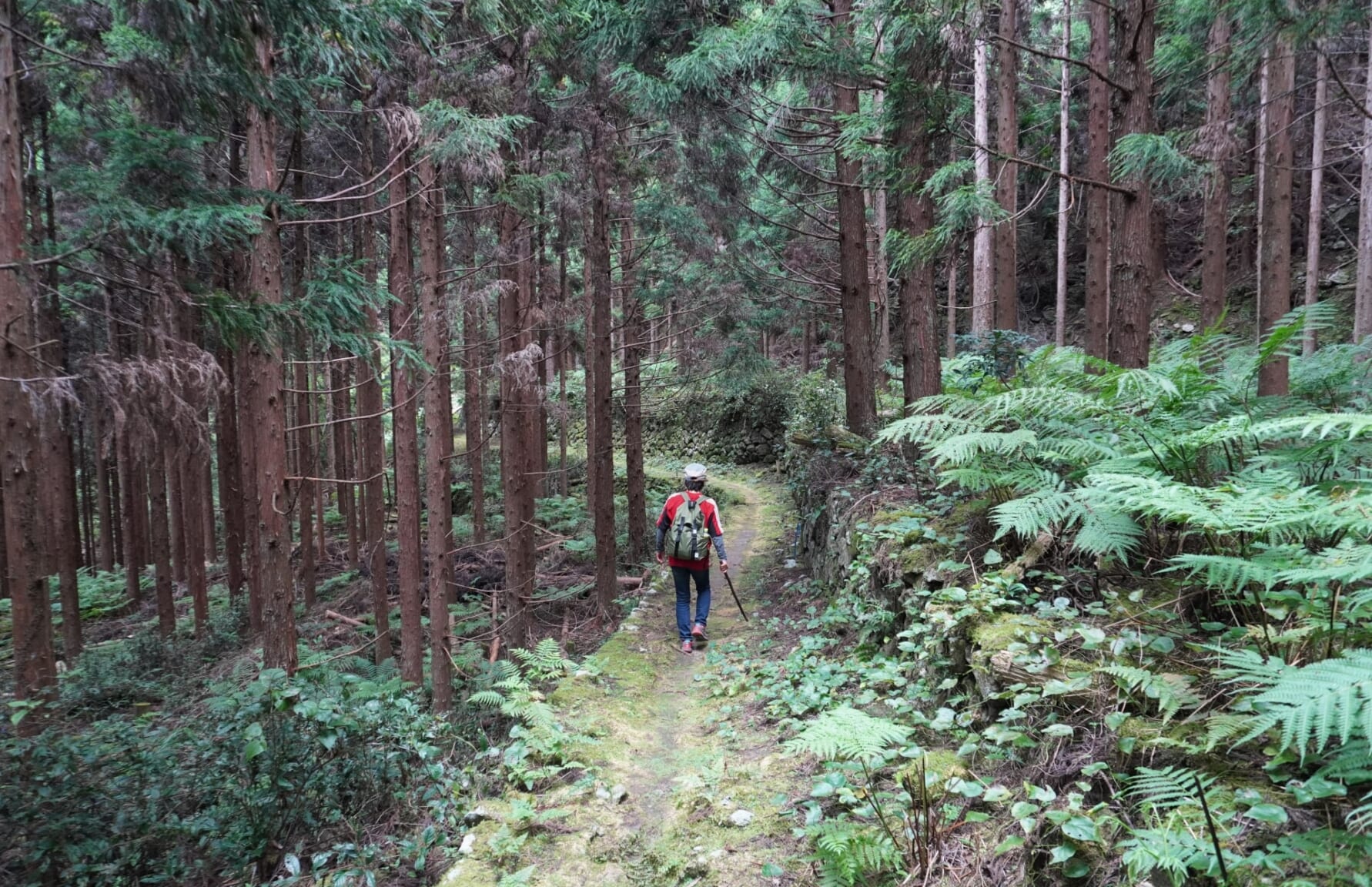
The ancient paths through the Kii Peninsula represent a living tradition that gives insight into Japan’s syncretic relationship between Shinto and Buddhist beliefs, as well as the ascetic spiritual practices deeply rooted in the region.
Shugendo: The Practice of Asceticism in the Mountains

Shugendo (修験道), an indigenous Japanese faith that combines elements of Shinto, Buddhism, and Taoism, plays a significant role in the spiritual heritage of the Kumano Kodo. This practice emphasizes a physical and spiritual journey through the mountains, seeking enlightenment through nature. The rugged terrain of the Kii Peninsula, with its dense forests and steep slopes, are believed to provide the perfect setting for the ascetic practices of Shugendo, where practitioners, known as yamabushi, engage in rigorous rituals to connect with the natural and spiritual worlds.
The Kumano Deities: A Synthesis of Shinto and Buddhism
At the heart of the Kumano Kodo’s spiritual significance are the Kumano deities, revered in both Shinto and Buddhism. These deities, associated with the three grand shrines of Kumano, embody the region’s syncretic religious traditions, where ancient Shinto gods and Buddhas are seen as manifestations of the same divine essence. Pilgrims on the Kumano Kodo encounter along the way various symbols, rituals, and festivals that celebrate these beliefs.
Exploring the Kumano Kodo Routes
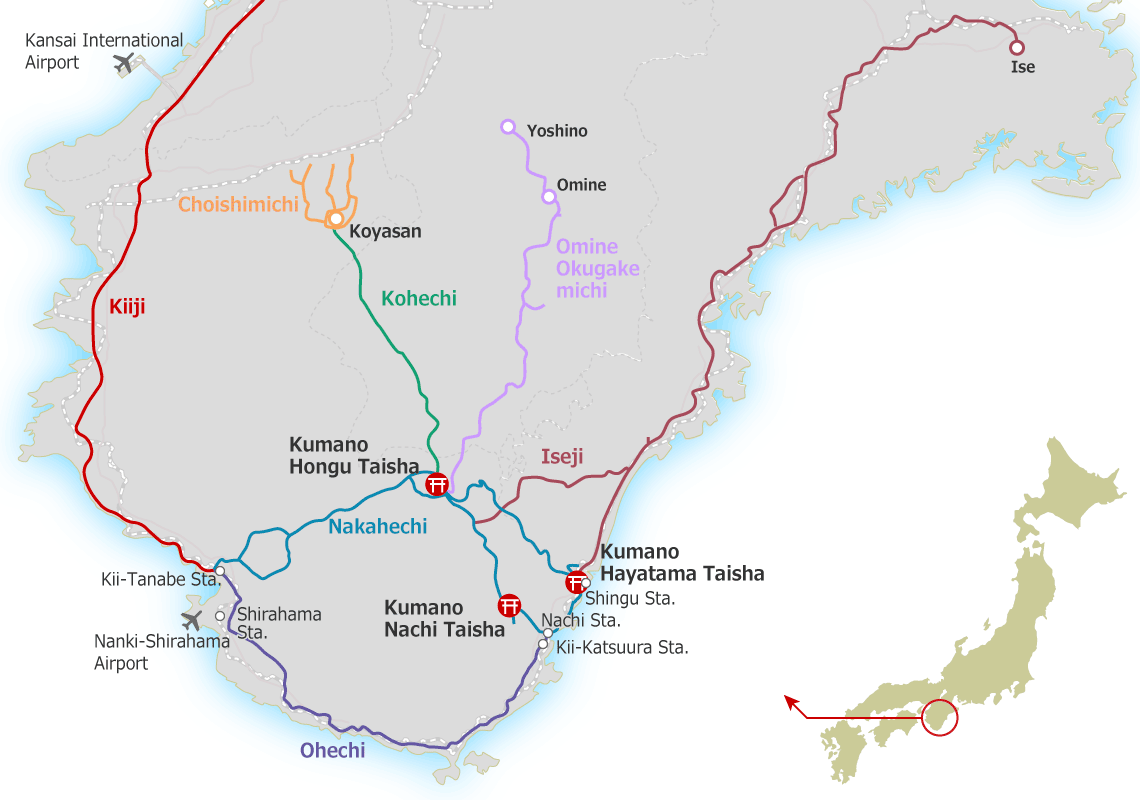
The Kumano Kodo consists of a network of trails, each with its distinct journey through. These routes vary in character, offering diverse challenges and insights into the region’s rich history and natural beauty.
Nakahechi Route: The Imperial Road
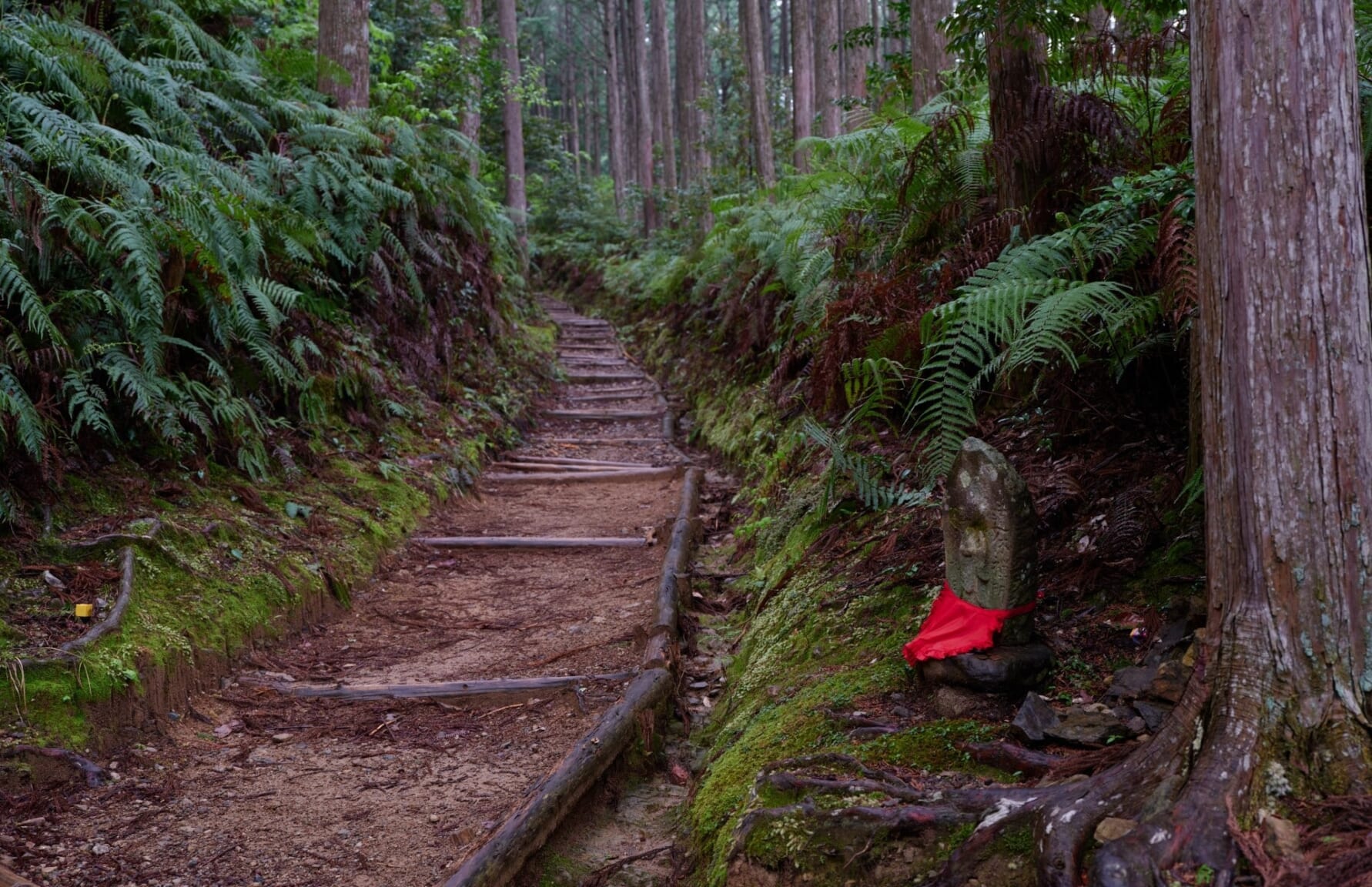
Also known as the Imperial Route, the Nakahechi Route (中辺路) was favored by Japanese emperors on their pilgrimages. It’s considered the easier one so it’s the most popular route, covering the path from the mountain outskirts of Tanabe City to the grand Kumano Hongu Taisha Shrine and then circling to the other two shrines, covering a distance of about 70 Km.
Takijiri-oji to Tsugizakura-oji
Takijiri-oji Shrine is a popular starting spot, next to the Kumano Kodo Information Center, as the western gateway to the sacred sites. The path from Takijiri-oji to Tsugizakura-oji is about 17 Km long and can be done in a day, although some may choose to break it down in smaller sections. There are lodgings and restaurants along the route as well as local buses running between Kii-Tanabe and Chikatsuyu. From this point to Tsugizakura-oji there are stone paved sections.
Tsugizakura-oji to Kumano Hongu Taisha
This leg of the journey is about 20 Km, with natural mountain trails, forest trails and some paved roads. Bear in mind you won’t find restaurants on this section so make sure to bring food. As it has less infrastructure than the previous section, we can enjoy tranquil paths, roads along creeks and the occasional waterfall, culminating in the majestic presence of Kumano Hongu Taisha.
From Hongu Taisha to Nachi Taisha y Hayatama Taisha
The hike from Hongu to Nachi typically takes two days, with the first section covering from Hongu to Koguchi village and then, from there to Nachi on the second day. There are no restaurants on these sections so you have to bring your own food.
Hayatama Taisha from Nachi Taisha or Hongu Taisha
Kumano Hayatama Taisha can be reached from Nachi Taisha over a 20Km route that can be covered in a day or less, for those opting for taking the train from Nachi station to Shingu station. There’s also an alternate route from Hongu Taisha that involves a combination of bus with a boat ride along the Kumano River.
Kohechi Route: The Mountain Pilgrim’s Trail
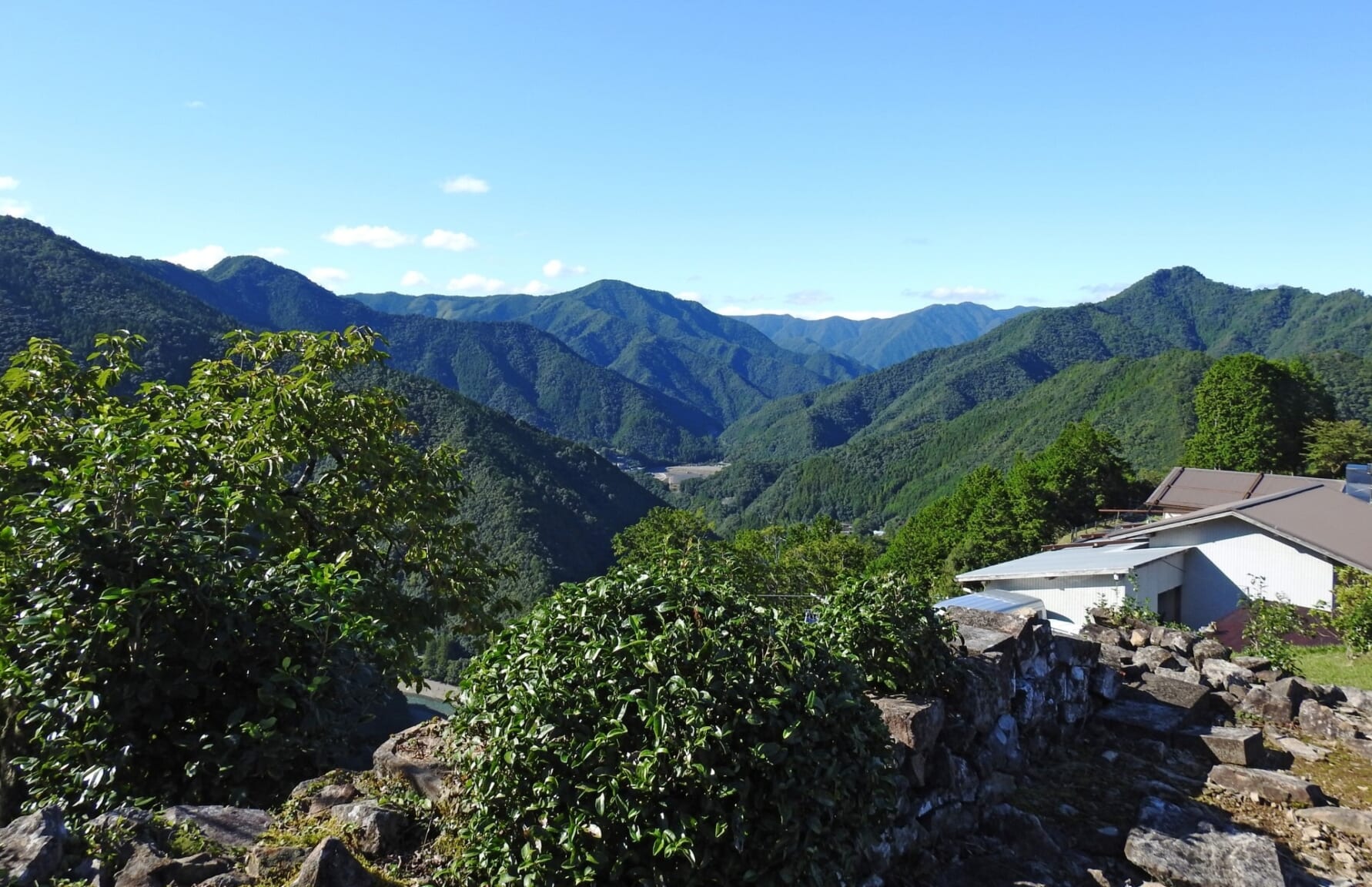
The Kohechi Route (小辺路) connects the sacred sites of Koyasan in the north to Kumano Sanzan in the south, cutting through the heart of the Kii Peninsula’s rugged mountains for about 70 Km. This path is known for its challenging terrain, so it’s generally chosen by more experienced hikers. The higher difficulty’s payoff are the breathtaking vistas of mostly untouched wilderness, contrasting the more traveled Nakahechi Route. It typically takes 4 days. Bear in mind the altitude variations might mean important changes in climate along the way depending on the season so it’s best to be prepared.
Main sections
- Koyasan – Omata: About 17 Km, around 7h walking.
- Omata – Miura guchi: About 15 Km, around 7h walking.
- Miura guchi – Totsukawa Onsen: About 18 Km, around 8h walking.
- Totsukawa Onsen – Hongu Taisha: About 15 Km, around 8h walking.
Iseji Route: The Coastal Path
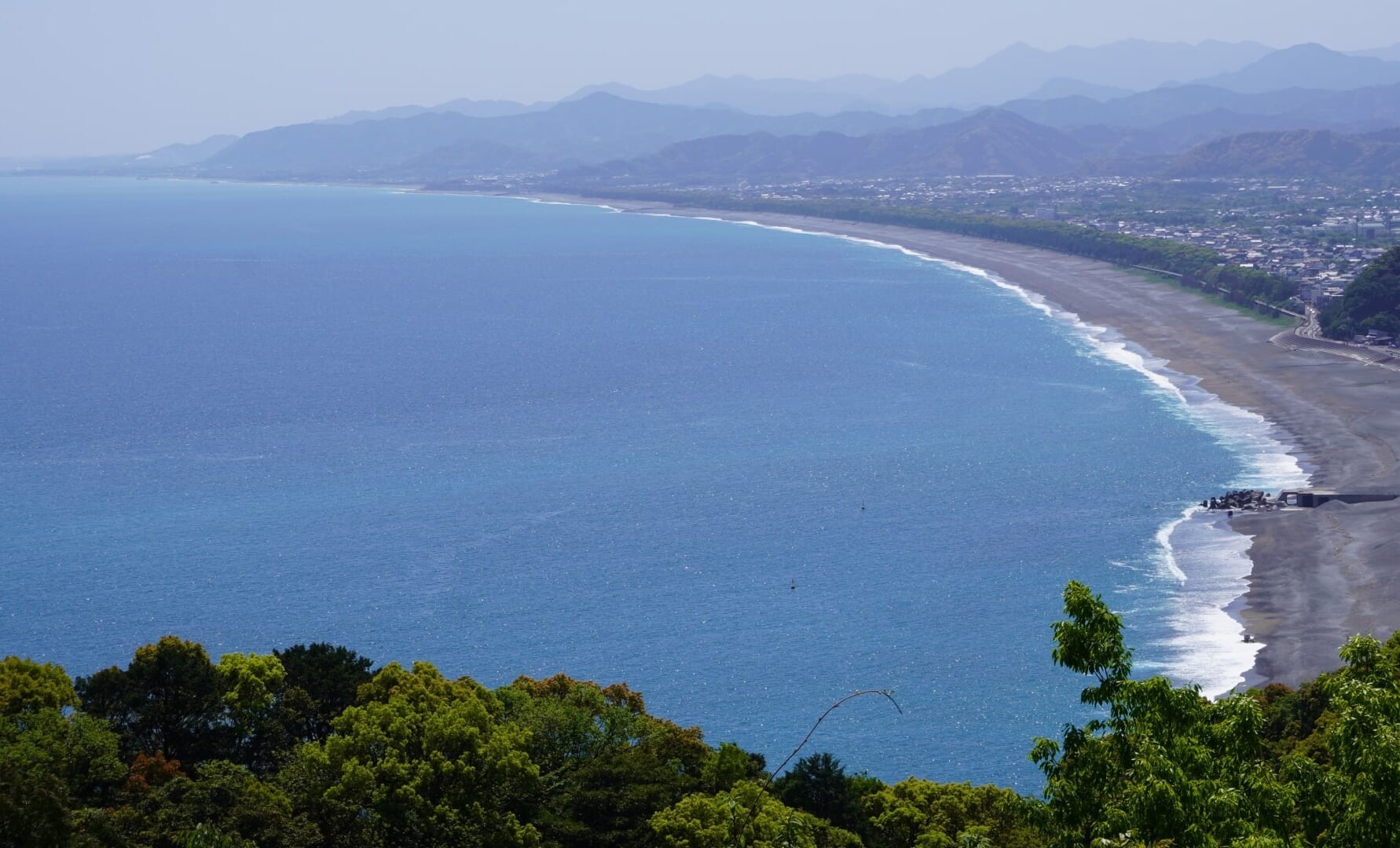
Skirting the eastern coast of the Kii Peninsula, the Iseji Route (伊勢路) traces a path between Japan’s most important Shinto shrine and mythical birthplace, Ise Jingu in Mie prefecture, and Kumano Sanzan. This trail is approximately 170 Km long and the second half of this journey is characterized with breathtaking coastal scenery, besides a series of ancient cobblestone paths and scenic rice terraces, leading through small fishing villages and past remote beaches.
Hiking for the entirety of this path takes approximately two weeks, traversing a variety of terrains like sandy beaches or rugged cliffs, and passing through small, picturesque towns along the way. Key highlights include the ancient Magose-toge Pass, with its beautifully preserved cobblestone paths, and the well preserved post-town of Owase, with its traditional buildings that give the feeling that the Edo period was frozen in place.
Ohechi Route: The Southern Coast Path

The Ohechi Route (大辺路) was often the choice for pilgrims with time to spare to enjoy views of the Kii-Peninsula southern coast, and thus it used to be favored by writers and artists. However it has fallen a bit out of favor in modern times as parts of this path have been destroyed to make way for highways. You can still walk through these highway sections but you must be extra careful. If you still choose to walk this path, you can still admire the scenery and perhaps, enjoy some solitude during your pilgrimage.
This route is about 92 Km long and connects Tanabe City with Kii-Katsuura. This route is usually done in 3 or 4 days, going through the towns of Shirahama and Susami as popular resting spots, as well as several villages and train station to stock up in food and drinks.
More info: 3 Days Itinerary in Kumano Kodo by Ohechi Route
Omine Okugakemichi Route: The Ascetic’s Trail
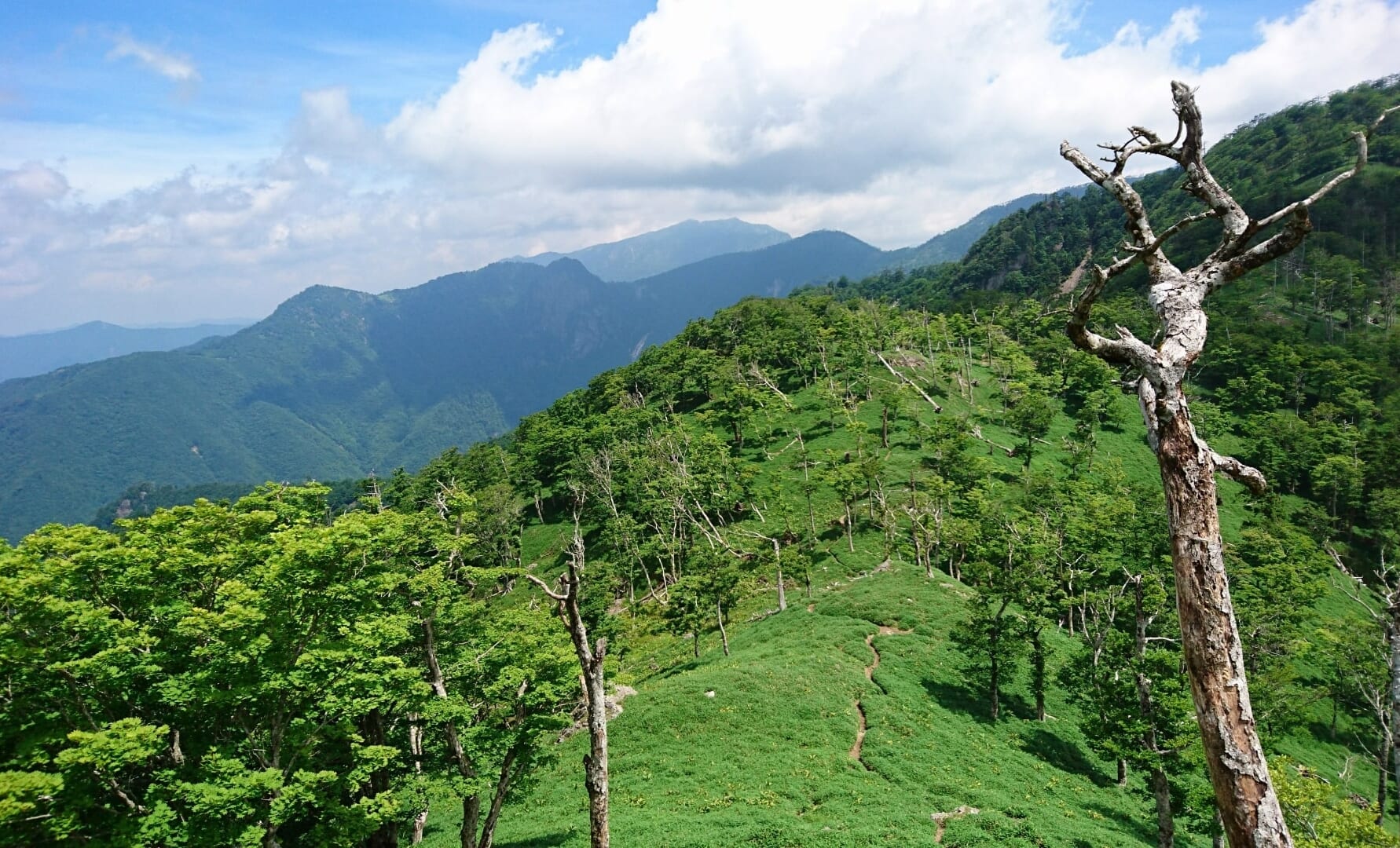
The Omine Okugakemichi (大峯奥駈道), less frequented than the other routes, is linked to the ascetic practices of Shugendo, a Japanese mountain worship tradition. This path is a training ground for Shugendo practitioners as it’s considered both a physical and spiritual challenge. It traverses through the sacred peaks of the Omine Mountains for about 80Km. Due to religious reasons, Mount Omine is forbidden for women, but they can still walk on the sections before and after the mountain.
The Kumano Sanzan
Kumano Hongu Taisha: The Heart of the Pilgrimage
Kumano Hongu Taisha (熊野本宮大社), in the mountains of the Kii Peninsula, is a cornerstone of the Kumano Kodo pilgrimage. The main deity of this grand shrine is Kato Mimiko no Okami, among many other deities linked with Japan’s mythical origins. The exact foundation date is unknown but it’s commonly attributed to one of Japan’s first emperors, making it one of the most ancient shrines in the country, with invaluable cultural treasures and historical artifacts. The latest reconstruction dates from 1889.
The Great Torii Gate and the Hongu Heritage
Dominating the approach to Kumano Hongu Taisha is the Great Torii Gate, the largest in the world at 33-meters tall, symbolizing the entrance to a sacred space. This gate, erected in the year 2000 at the Oyunohara sandbank, serves as a threshold, separating the mundane from the sacred, and invites pilgrims to enter with reverence and mindfulness.
Oyunohara: The Original Sacred Site
Before its current location, Kumano Hongu Taisha was located at Oyunohara, a vast, open-air sanctuary, set at the confluence of the Kumano River’s tributaries, holds deep spiritual importance. Oyunohara’s natural setting, surrounded by towering trees and flowing waters, provides a serene backdrop for contemplation and connection with nature, echoing the pilgrimage’s enduring themes of renewal and spiritual journeying.
Kumano Nachi Taisha: The Waterfall Shrine
Kumano Nachi Taisha (熊野那智大社) is a place where the imposing Nachi Waterfall creates one of the most iconic sights from all over the country. This is a unique space where the majesty of nature plays a central role. Kumano Fusumi Okami is the most important deity enshrined here, where the lines between Shinto and Buddhist traditions blur.
The Nachi Falls: Where Nature and Spirituality Intersect
Nachi Falls, with its impressive height as Japan’s tallest single-drop waterfall, is not merely a scenic attraction; it holds deep spiritual significance. The sight of the water cascading down into the basin below is a powerful reminder of nature’s cycles and its nurturing force. For many, the falls evoke a sense of awe and reflection, heightened by the proximity of the shrine’s sacred structures.
A Closer Look at the Shrine Complex
The architectural elements of Kumano Nachi Taisha, from the grand main hall to the striking pagoda of Seiganto-ji, are thoughtfully integrated into the natural landscape. As visitors move through the complex, they encounter a series of buildings that not only showcase historical craftsmanship but also tell the evolving story of this spiritual site. The interplay of architectural beauty and the lush environment offers a tranquil setting for exploration and contemplation.
Kumano Hayatama Taisha: The Shrine by the Sea
Kumano Hayatama Taisha (熊野速玉大社) is located close to where the Kumano River meets the ocean in Shingu City. It enshrines the deities of Kumano Hayatama no Okami and Kumano Fusumi no Okami among several other syncretic deities. As part of the Kumano Sanzan, this shrine is deeply rooted in the area’s history and spiritual traditions.
The Spiritual Significance of Hayatama Taisha
Kumano Hayatama Taisha is home to ancient artifacts and sacred objects that date back to the origins of the Kumano worship, as well as the towering 1,000-year-old sacred Nagi tree. Designated as a Natural Monument of Japan, the tree symbolizes calmness and safety and its leaves are taken as a keepsake for pilgrims, to protect them during their journey.
Practical Tips for Pilgrims
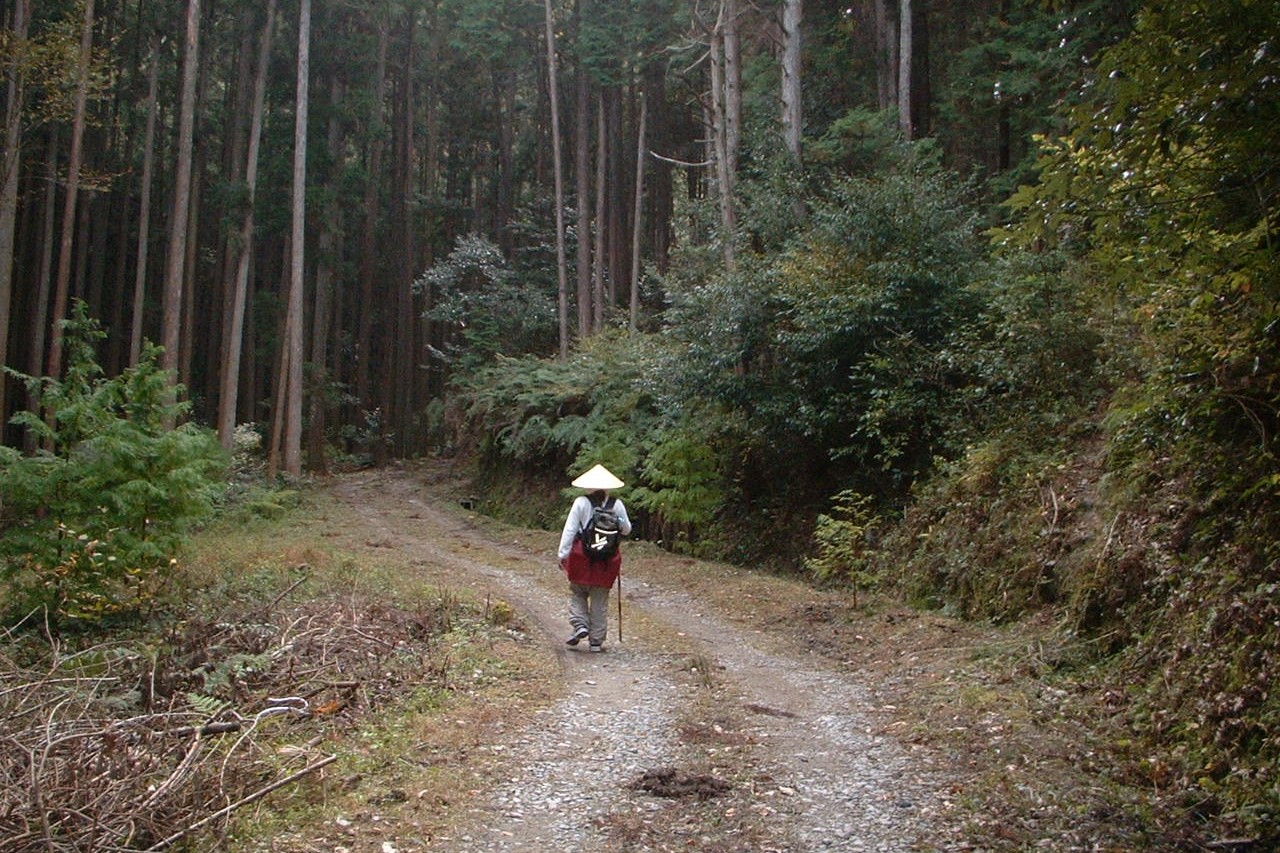 Embarking on the Kumano Kodo is a journey that requires thoughtful preparation and an understanding of the unique conditions of this sacred pilgrimage:
Embarking on the Kumano Kodo is a journey that requires thoughtful preparation and an understanding of the unique conditions of this sacred pilgrimage:
Best Times to Visit and Weather Considerations
The Kumano Kodo can be walked year-round, but each season offers a different experience. Spring brings mild weather and the bloom of cherry blossoms, making it a popular time for pilgrimage. Autumn is equally favored for its cooler temperatures and the stunning display of fall foliage. Summer offers lush greenery but comes with high temperatures and humidity, requiring ample hydration. Winter sees fewer visitors which for some may be a better pilgrimage experience, though some trails may be more challenging due to colder weather.
Essential Gear and Preparation Tips
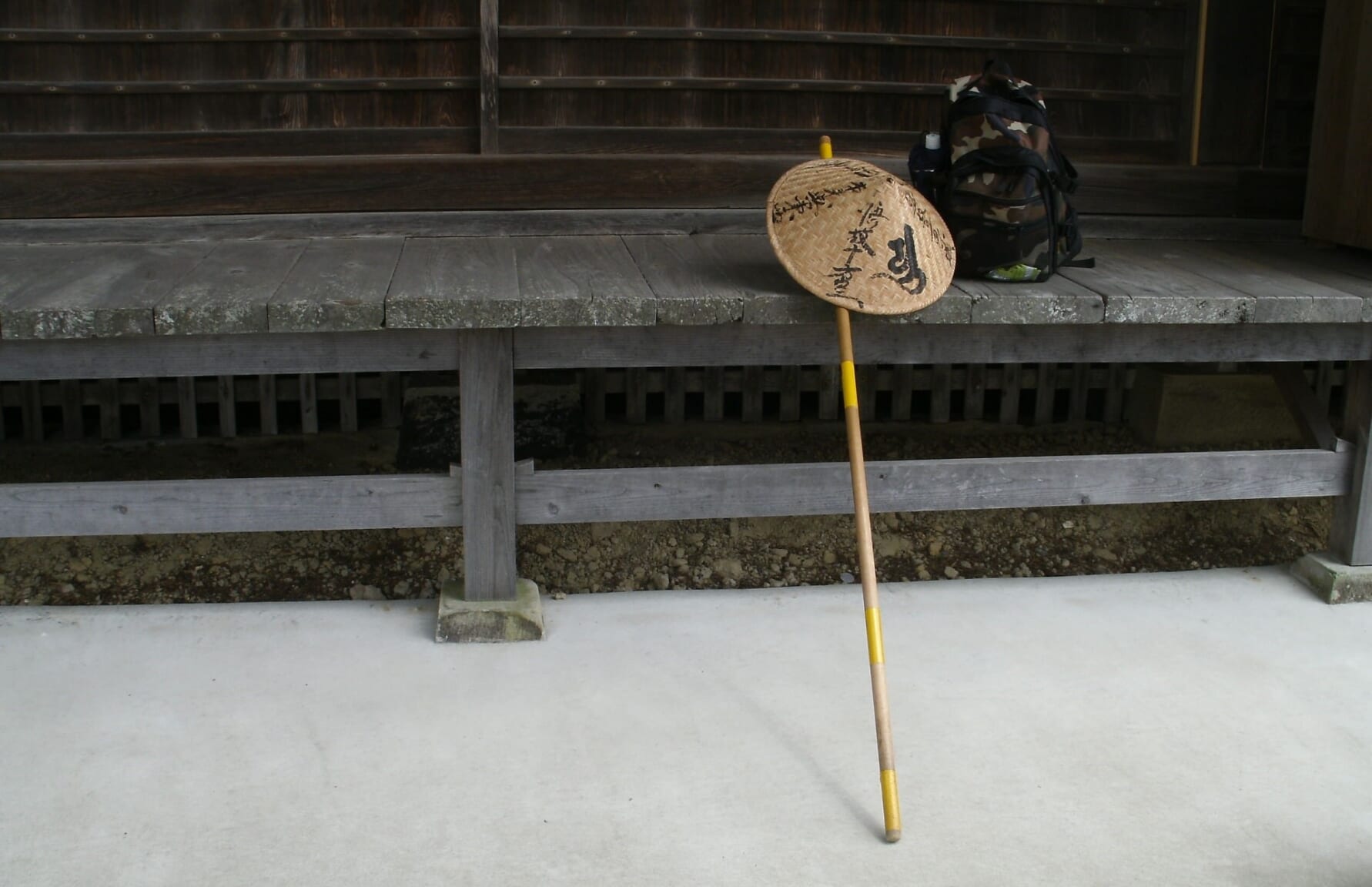
Proper gear is crucial for a comfortable journey on the Kumano Kodo:
- Sturdy, broken-in hiking boots are a must, as trails can be uneven and occasionally slippery.
- Lightweight, breathable clothing that can be layered allows for adjustments to changing weather conditions.
- A reliable rain jacket or poncho is essential, as the region is known for sudden showers.
- A daypack to carry water, snacks, and a basic first aid kit will help ensure a safe trek.
- For those planning multi-day hikes, arranging accommodations well in advance is recommended, as guesthouses and inns along the route can fill up quickly, especially during peak seasons.
Navigating the Routes: Signage and Wayfinding
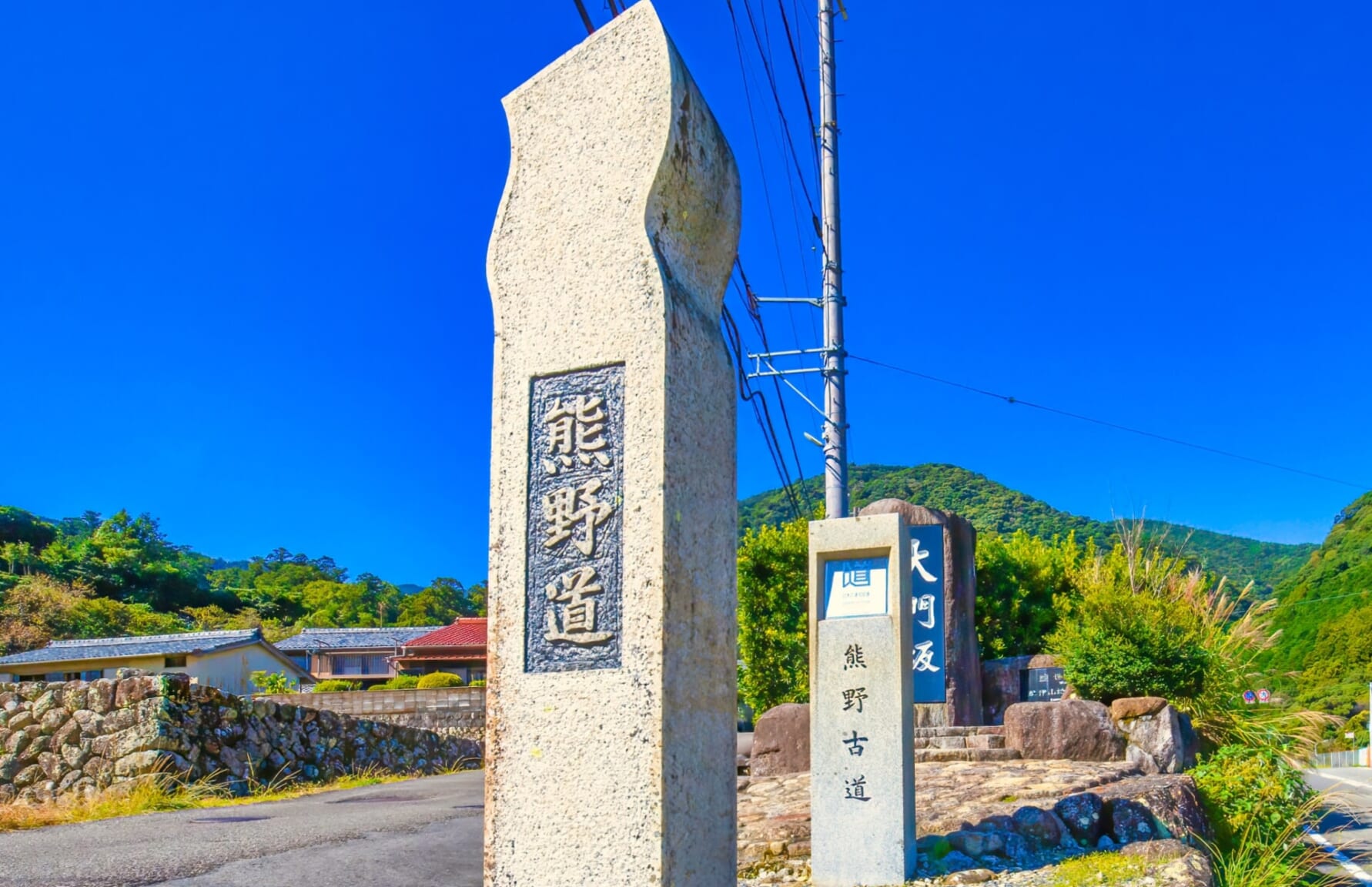
The trails of the Kumano Kodo are well-marked, with signposts in both Japanese and English at key junctions and points of interest. Detailed maps are available and recommended for all pilgrims, providing not only route guidance but also insights into the cultural and historical significance of various sites along the way. For those seeking a more guided experience, local tour operators offer organized walks, ranging from day hikes to full pilgrimages, complete with cultural explanations and logistical support.
As the trails of the Kumano Kodo wind through ancient forests, across mountain passes, and by sacred shrines, they invite a deep sense of reflection. Pilgrims often find that the physical challenge of the journey is matched by an inner journey of discovery and contemplation. The experiences along the way, from the warmth of local hospitality to the solemn beauty of the shrines, leave lasting impressions that extend far beyond the pilgrimage itself.
▽Subscribe to our free news magazine!▽
For more information about traveling in Japan, check these articles below, too!
▽Related Articles▽
▼Editor’s Picks▼
Written by
Photographer, journalist, and avid urban cyclist, making sense of Japan since 2017. I was born in Caracas and lived for 14 years in Barcelona before moving to Tokyo. Currently working towards my goal of visiting every prefecture in Japan, I hope to share with readers the everlasting joy of discovery and the neverending urge to keep exploring.





